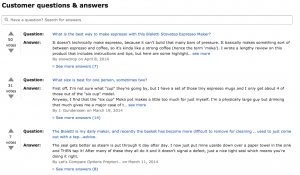Make the decisions that really matter, with the information you need.

Good reporting turns raw information into valuable business knowledge. But when your data is spread across multiple software systems and different departments, it’s all too easy for day-to-day as well as strategically critical information to end up lost, or buried beneath an avalanche of irrelevant material. So how do you get to the truth?
Crucial to bringing that data to life is effective management reporting. Here are six ways in which you can make sure your company’s reporting performance is up to the mark.
1. Makes sure reports are accurate.
Since decisions based on incorrect or incomplete data are far more likely to be wrong, accuracy is fundamental to any good reporting. So if you want your reports to be credible, double check facts and figures, then show that this information comes from the most credible, reliable and current sources available.
“Nearly two-thirds of business managers said they makes crucial decisions without the right information.”
2. Good reports are comprehensive.
Reports should always be comprehensive enough for the purpose they are intended. However, they shouldn’t overwhelm the reader with more information than they need, otherwise you will create a confusing picture. Information should be pyramid-shaped: sharp focus at the top with the ability to drill down to the underlying detail below. (Effective ERP reporting tools should easily support this).
3. Reports should be relevant and useful.
Reports that contain information that’s neither relevant nor useful contribute nothing to better management. Instead, they take up valuable time and effort to produce while failing to enlighten those who read them. If they are to have value, reports must address a specific subject in a way that’s relevant. So think – when was the last time you reviewed exactly what information your usual reports actually give?
4. Be simple. Be clear.
Effective reports don’t try and impress with complexity and content. Instead, they create a hierarchy of information that draws attention to what is most important – and allow the reader to investigate along different dimensions and measures (i.e. if used on-screen). If a report is unclear or unappealing, it may not be read – and an unread report is clearly a waste of everybody’s time.
5. Put information in context.
While reports need to paint a picture of current reality, to be of greatest value they often need an historical benchmark: last period, this time last year, year to date. Even better are graphical trends over multiple periods to identify emerging patterns. To give a greater understanding, it’s often good practice to include a ‘narrative commentary’ to explain data and detail.
“When you actually go into the business world and you look at the data, half of the data is missing, some of it doesn’t make any sense, but you still have to use it.”
Dr. Goutam Chakraborty, Oklahoma State University.
6. Make timely reporting easy.
Good reporting practices allow managers to access reports at the moment they are needed, wherever that may be: on site, off site, on a mobile device or within the business’ IT system itself. Today’s technology allows reporting – even Business Intelligence reporting – to be ‘self service’. Relying on reports that are out of date, or require IT staff’s assistance, should become a thing of the past.
Better reporting with ERP.
When ERP software systems are in place, good reporting is that much easier. With a single data source to work from, each level of reporting is made easier: from monitoring key performance indicators to exploring ‘Business Intelligence’ on your mobile device. As a result, management awareness is sharper to drive quick decisions and remedial actions that boost productivity and results.
This post first appeared on the Sanderson blog.
(307)







